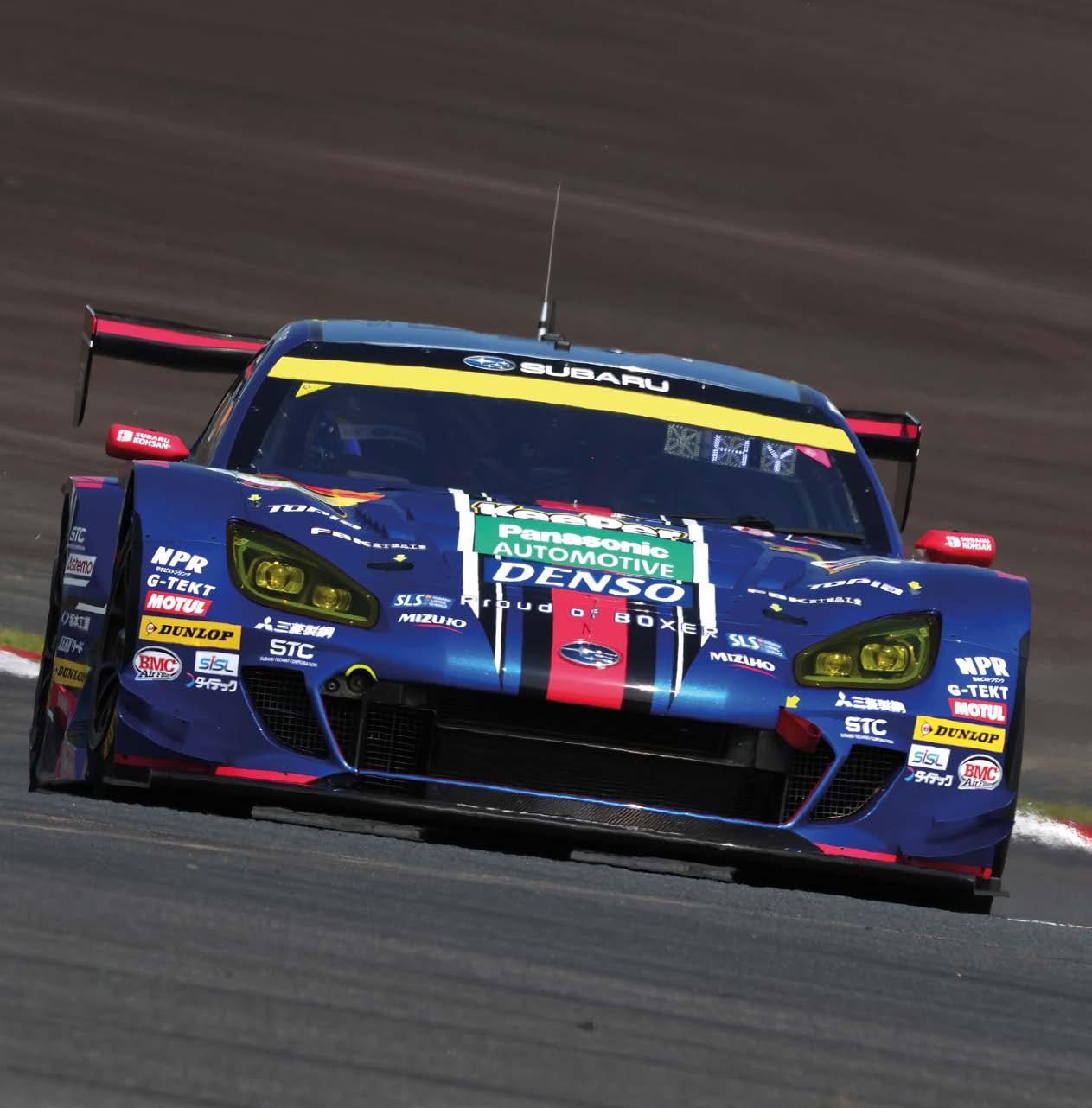

Subaru BRZ
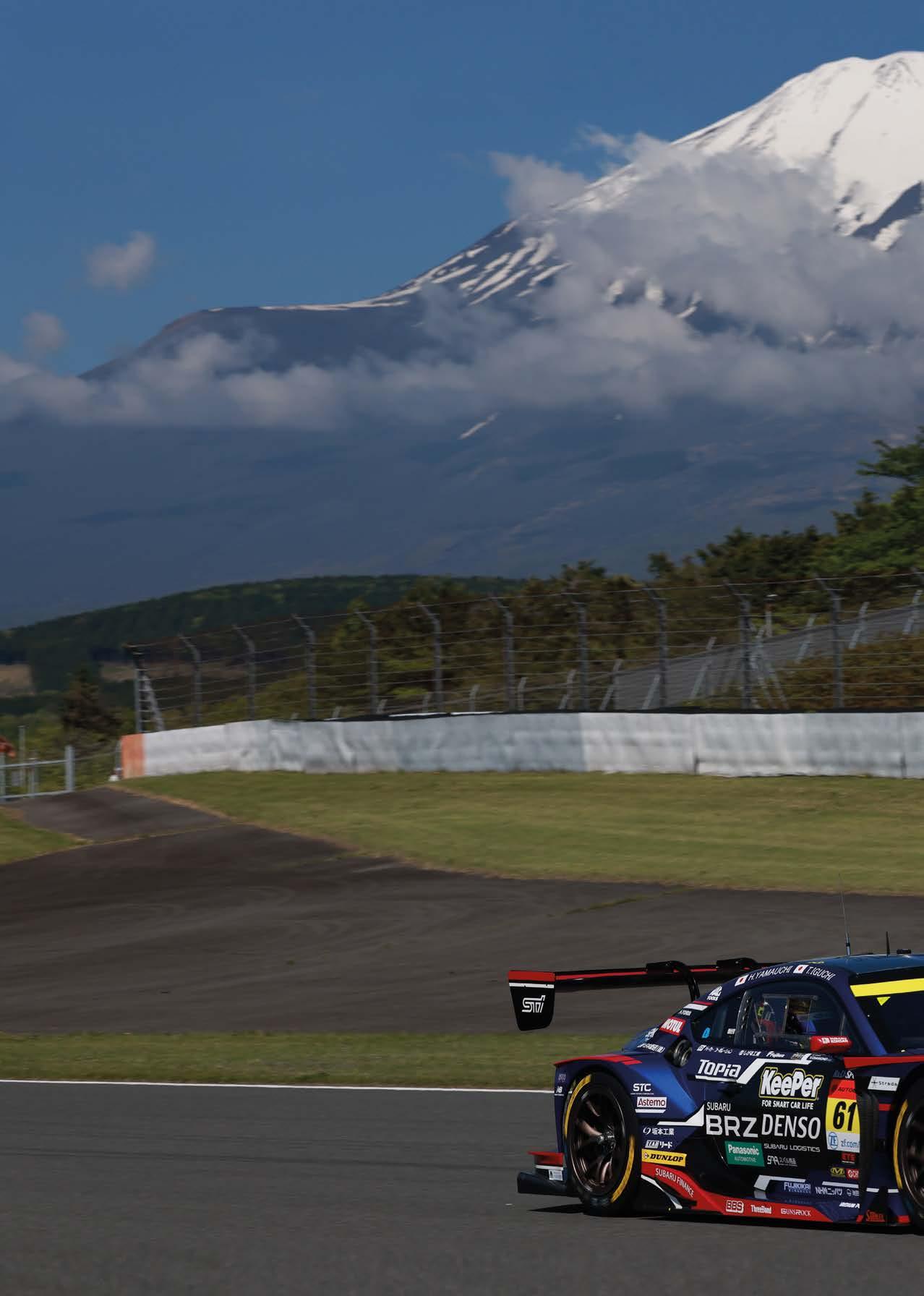
Steep climb
It took Subaru 20 years to clinch a GT300 title with the arrival of the second-gen BRZ in 2021, but that achievement has proven to be a tough act to follow
By JAMIE KLEIN
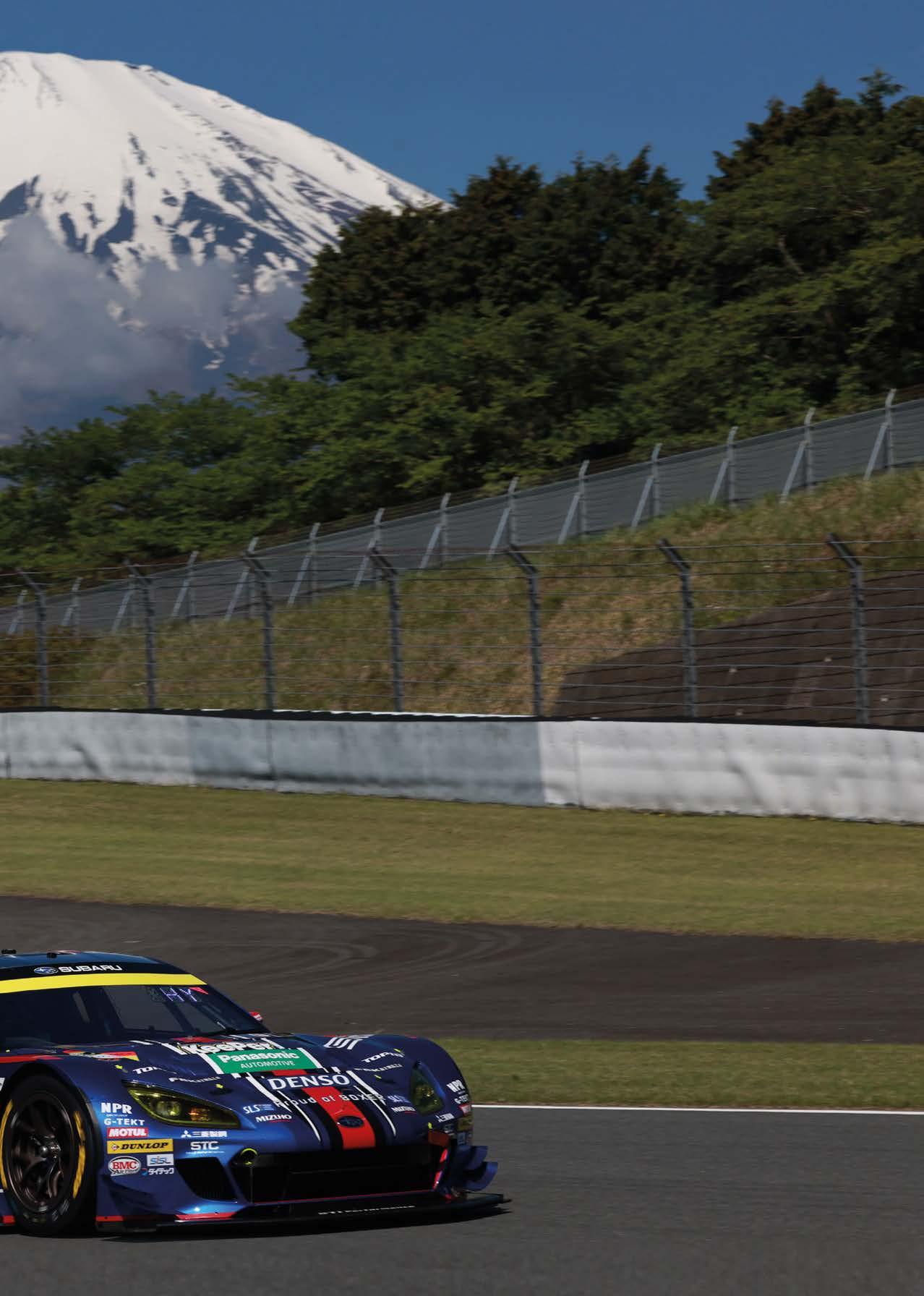
Subaru’s racing programme focuses on Super GT’s second-tier GT300 class, where domestic cars go up against globally recognised FIA GT3 models. The current BRZ racer is built to GTA-GT300 regulations, meaning it is only active in Japanese motorsport
Green Hell raiser
An endurance race like no other, Racecar joined the Falken GT3 squad to see what makes the Nürburgring 24 Hours stand out
By DANIEL LLOYD
The Nürburgring 24 Hours is one of the best-attended motorsport weekends in the world, attracting almost a quarter of a million fans to Germany’s fabled Nordschleife, while at the same time retaining the traditions that give it a pleasingly accessible feel.
Interest is driven by the combination of a daunting 25.378km circuit with more than 80 turns, a 130-car grid with fabulous variety and huge speed differentials, and a festival crowd atmosphere full of bratwurst and beer. It is held on the Corpus Christi holiday weekend and the German fans take full advantage of their days off work to attend.
The ‘N24’, as it is often abbreviated to, is also the favourite race of many a top-level GT driver, even sitting above the 24-hour classics at Le Mans, Spa and Daytona, which may be considered more globally prestigious. Today’s GT3 cars are so mechanically and aerodynamically stable that wheeling them around a regular racetrack is rather straightforward, but the Nordschleife washes out any complacency with sections that cause the cars to jump and slide. The Nürburgring’s sheer size also means the weather can change several times during a lap, adding to the excitement.
Its tarmac ribbon, plastered in spectators’ chalk graffiti like a Tour de France stage, winds through the dense forest of the Eifel region of Germany, flanked only by thin strips of slippery grass and metal safety barriers. There are several high-speed sections and mistakes are often punished with dramatic consequences. Here, the drivers’ skills are tested, and exposed, like no other GT race.
The N24 track is unlike any other in modern GT racing, featuring over 80 corners, 300 metres of elevation change and lap times exceeding eight minutes

The N24 also retains an ‘old school’ feel. The professional, sometimes factorysupported, teams running GT3 cars in the top SP9 class rub along with outfits racing more basic cars in slower categories on significantly smaller budgets. Fans can access the walkway between the team trucks and pit boxes, rubbing shoulders with the mechanics and angling for used tyres to keep as souvenirs.
The big four
Despite that purity, it’s a highly serious competition for victory between the ‘big four’ German car brands, whose rivalry into the GT3 era has tightened the margins and increased the professionalism. The level has risen in the last 10 years as teams continue to fine tune their cars’ performance.
To understand what it takes to run the N24 in the top class, Racecar tagged along with one of the event’s most experienced teams. Falken Motorsports has been competing in the race since 1999, initially running Nissan Skylines before moving on to top-level GT3 machinery.
Since 2011, the team has operated as a partnership between Japanese tyre supplier, Falken Tyre, and the Schnabl Engineering race team from Germany. Falken runs a pair of Porsche 911 GT3 Rs in SP9 with allprofessional driving quartets.
The Falken race programme is chiefly stimulated by the N24 permitting different tyre manufacturers, which is a rarity in GT3 racing nowadays. The other major 24-hour races at Le Mans and Spa both have sole GT3 suppliers that provide the same, single compound tyre to all teams.

Graphic: Nürburgring

It’s a highly serious competition for victory between the ‘big four’ German car brands, whose rivalry into the GT3 era has tightened the margins and increased the professionalism
The new(ey) guy

Pierre Waché has been at Red Bull for a decade and technical director for six years, although his role has often been overshadowed. With Adrian Newey now leaving, he tells Racecar Engineering about his extraordinary journey to the top of F1
Interview by Christian Menath

Christian Menath: You have a very interesting background. Most of the people in the paddock are here because they really wanted to be in Formula 1, but not you.
Pierre Waché: No, clearly not! It wasn’t even on my radar to begin with. My family has a scienti c background in medicine. They were all doctors. I did my PhD in uid mechanics and specialised in biomechanics, looking at the e ect of blood ow on the radial cells around the vessel.
CM: Did you only choose that path because you grew up this way, or were you genuinely interested in the subject?
PW: I didn’t know at the time. The opportunity arose when I was doing my PhD. It wasn’t that I liked those topics
more than others, I just liked the challenge, and I chose to accept it.
CM: Studying usually comes with a goal of what you want to do later. What was yours?
PW: My goal at the time was to become an academic researcher. I had a proposal for it, but I had to do military service at the time. I was one of the last people in France who had to do that.
There was an opportunity to do research work abroad instead of military service, and I had an o er to work at Georgia Institute of Technology in the United States as a postdoctoral researcher, but I met my wife and decided against it. I wanted to stay in France with her, so I did my military service in Paris and after that my life changed.
CM: Because you went to the tyre manufacturer, Michelin? How did that change of direction come about?
PW: After my military service, I was looking for a job. I couldn’t do academic research in France because I didn’t do postdoc research. That’s why I was looking for an R&D position in industry. I’m not a Parisian and I like the countryside, so I looked for a job outside the city. Michelin was located near the o ce where I did my military service, so I applied there and got the job.
CM: So you had nothing to do with motorsport until then?
PW: Don’t get me wrong, I’ve loved motorsport and sport in general since I was a teenager. I love the competitive aspect,
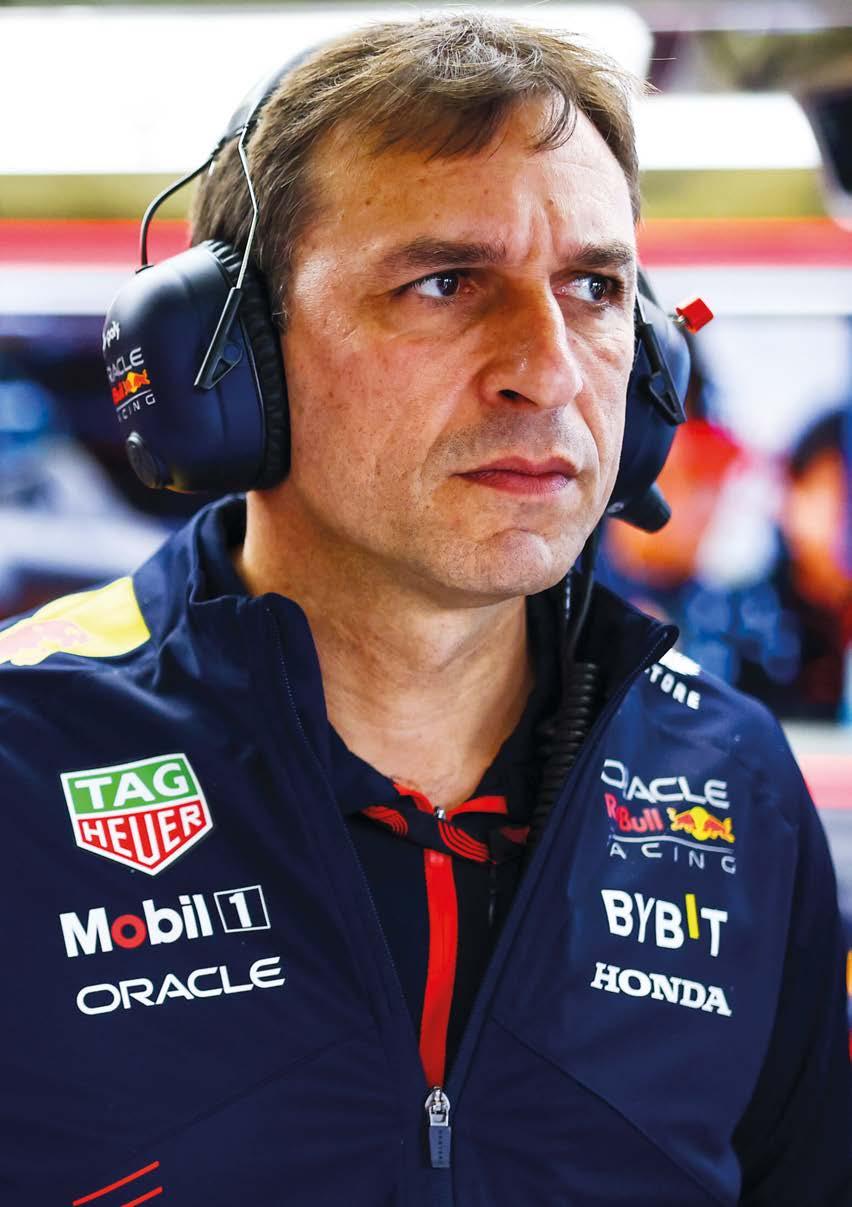
but I never thought I would be [working] there. Even when I started at Michelin, I didn’t want to be in Formula 1, the purpose was to research aquaplaning because that’s where I came from. I said that I could help with that and ended up getting a job in Formula 1. It was all about the interaction between the ground and rubber, and that was similar to what I had done in the past. I loved working on that challenge, and never stopped doing it after.
CM: Do you still understand what happens between the asphalt and the tyres? It seems a bit more complicated with today’s Pirellis...
PW: I will not say I completely understand it; it’s at the limit of what we know. With the information we have, it’s better to have
more knowledge than less, but we are still missing a few aspects.
CM: What exactly did you do at Michelin?
PW: I was there for seven years. In the first few years I was in research and developed models to anticipate the mechanical grip between rubber and tarmac and to give a direction for rubber development for better grip in dry conditions. That was more on the tyre side. Later, I was on the car side, looking at how the car works with the tyre. I was on site for testing, but I was never at the track otherwise. I focused on research and development.
CM: When Michelin left Formula 1 in 2006, you went to work for BMW Sauber. How did that come about?
It was all about the interaction between the ground and rubber… I loved working on that challenge, and never stopped doing it after
Though the competitive element of motorsport was always of interest to Waché, he never set out to work in the industry, but a research job at Michelin opened the door and he’s never looked back
PW: [Former Michelin engineer] Loïc Serra went to BMW before me and then attracted me. I found the challenge very interesting. I could have stayed with Michelin – it was a fantastic company, I loved it and they gave me the opportunity to continue there – but Loïc won me over. He is a very convincing personality, so I went to BMW. That was a very nice experience.
CM: You took on an overarching role for the first time at Sauber, having previously focused on an area. How did that work out?
PW: I did tyre engineering and vehicle dynamics there. I think everyone has to start the same way, whichever team you work for. You start with what you are very good at, where you think you know more than the
Racecar visited Caterham’s new factory to talk about its successful motorsport programme, and the much loved Seven that’s at the heart of it
By MIKE BRESLIN
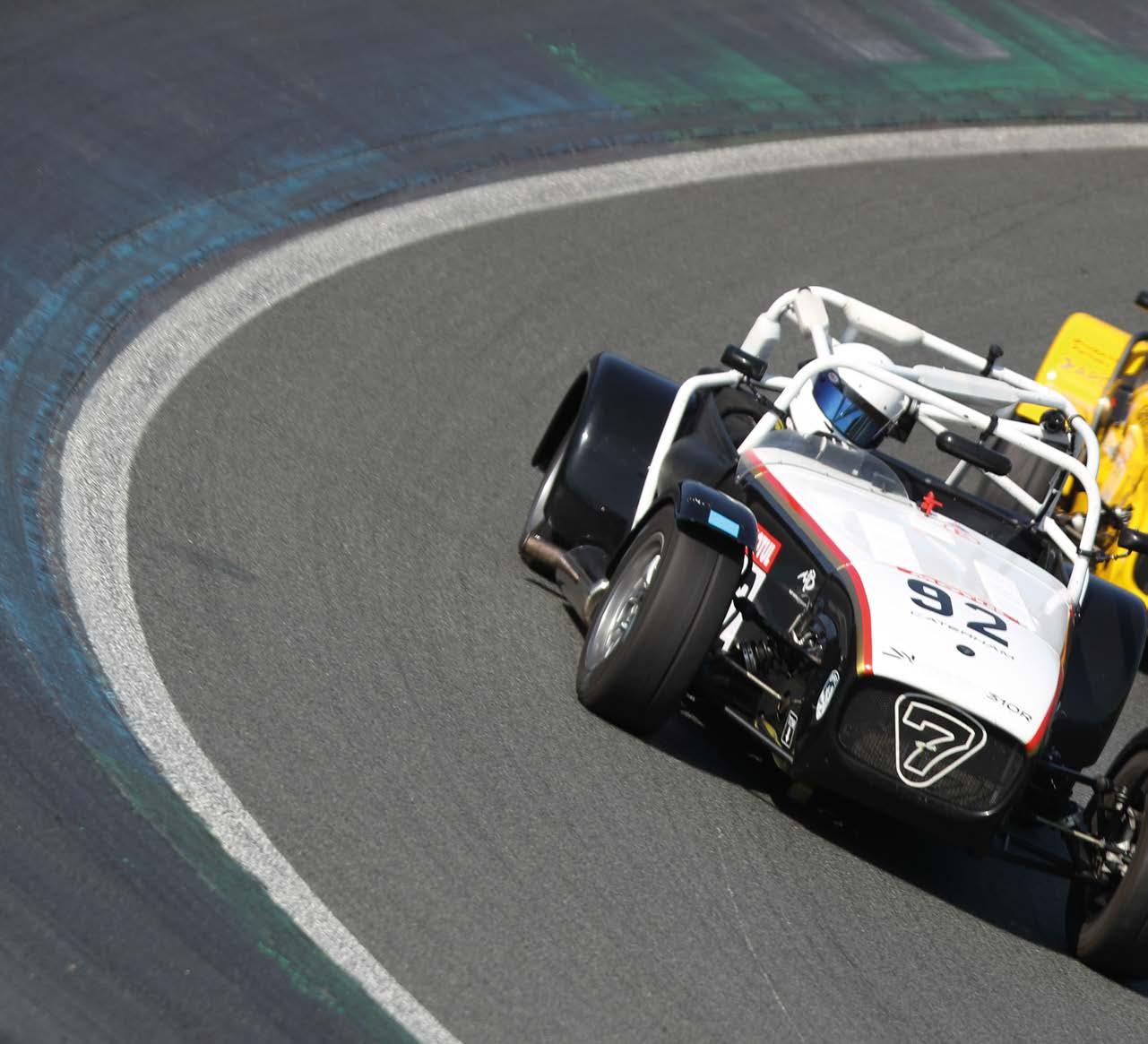
Seven heaven
There is a broad and very smart balcony area called ‘The Terrace’ that overlooks the factory floor at Caterham’s brand new manufacturing facility in Dartford, Kent. From here, visitors have a fine view of all the activity below, and it’s a scene that will be very familiar to many readers of this magazine. For rather than a production line with whirring robots, this car factory is more like a race shop, with individual bays where skilled technicians build the cars. Consequently, it feels more like visiting a racing team, albeit a very large one, than a motor manufacturer.
Perhaps this should not be surprising, for motorsport is at the very heart of this British sports car company. Indeed, Caterham Motorsport now runs five single-make championships in the UK, one of which has likely introduced more new competitors into racing than any other over the past couple of decades. On top of this, there are other series for its cars that are active across the world (the French and Portuguese championships are particularly healthy), and let’s not forget – though some might prefer to – that the Caterham name also graced Formula 1 for a short time.
What is most telling, though, is that the Caterham racecars are assembled alongside the road cars as part of the same build process. This probably says more about the latter than the former, but surely illustrates the two are fundamentally intertwined in terms of technical philosophy.
The Lotus position
This has always been the case, for the car at the heart of Caterham is the Seven, a vehicle whose lineage can be directly traced back to the Lotus Seven of 1957, a car designed with club racing firmly in mind.

Caterham Cars, then a Lotus dealer, bought the rights to build the Seven from Lotus in 1973 and it remained an independent company until it was purchased by the Team Lotus Formula 1 outfit – the Tony Fernandes version – in 2011, so it could use the name in F1 (see box out on p42). There have been other owners since, but Caterham is now under the umbrella of Japanese company, VT Holdings.
The most visible benefit VT Holdings has brought is the recent move to a new, 54,000ft. sq facility in Rennie Drive, Dartford. A £5m investment, the factory has initially
Caterham is one of the most popular cars on the UK race scene, and the firm currently runs five championships from its new Dartford factory, including 310R (main pic)
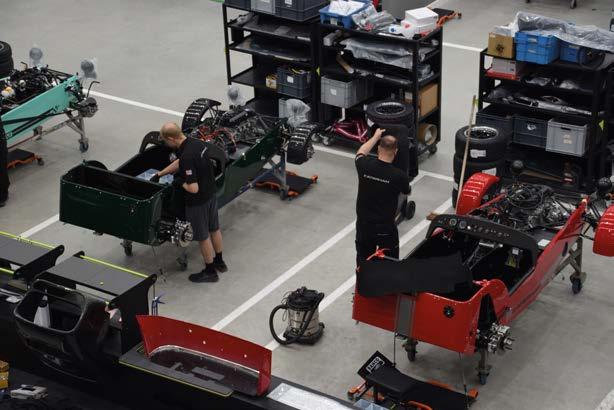

are spaceframes with aluminium impact protection panels sandwiching an aluminium honeycomb structure. The rollcages for the racecar versions are bolted in during the build process
been leased for 12 years. This gives Caterham the capacity to build around 750 of its Sevens a year – up from approximately 500 before the move – of which about 15 per cent of the total built are racecars.
The company started out in Caterham, Surrey, before relocating to Dartford in 1987. The Kennet Road factory operated for 36 years until the new site opened this year. Some of its 130 employees work in the individual bays in which all Caterhams are built, with a single technician responsible for each car. Every completed Caterham bears a small plaque proclaiming who assembled it,
which instils pride and, because of that, an additional layer of quality control. It’s an approach to car building that Caterham is very proud of, but one that is also necessary because of the wide range of Sevens it sells.
‘At one point, someone tried to put a production line in,’ Caterham CEO, Bob Laishley, recalls. ‘It didn’t work because the variation in our cars is so huge. If we take a 170, it takes 30-40 hours to put together, whereas a 620 takes 60-70 hours. So, as soon as you’ve got a 620 in a production line, every 170 is costing you the same amount of money to build as a 620. It just doesn’t work.
Each Caterham Seven, including the racecars, is built by a single person in one of the factory’s 33 bays. The technicians that work in them are expected to build at least two cars a month
Chassis

Code red
The world of autonomous driving is about to take a step into the future using technology inspired by fighter aircraft and proven in motorsport
By ANDREW COTTON
